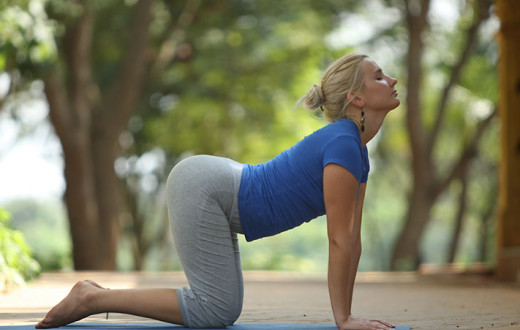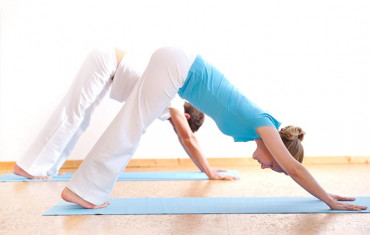There is much more to yoga than meets the eye. While the practice of yoga means asanas and breathing practices to many, there is a lesser known, more subtle and independent branch of yoga: Yog Tatva Mudra Vigyan or the science of yoga mudras.
Significance of yoga mudras
Entirely distinct and based on the principle of Ayurveda, yoga mudras are understood as a healing modality. The Sanskrit word mudra is translated as a gesture. A mudra may involve the whole body or could be a simple hand position. Mudras used in combination with yoga breathing exercises enliven the flow of prana in the body, thereby energizing different parts of the body.
How do yoga mudras work?
According to Ayurveda, diseases are caused due to an imbalance in the body, which in turn is caused by lack or excess of any of the five elements.
Our fingers have the characteristics of these elements and each of these five elements serves a specific and important function within the body. The fingers are essentially electrical circuits. The use of mudras adjusts the flow of energy - affecting the balance of air, fire, water, earth, ether - and facilitate healing.
Mudras create a subtle connection with the instinctual patterns in the brain and influence the unconscious reflexes in these areas. The internal energy is, in turn, balanced and redirected, affecting change in the sensory organs, glands, veins and tendons.
How to practice some basic yoga mudras
Let’s explore four mudras:
- Chin mudra
- Chinmaya Mudra
- Adi Mudra
- Brahma Mudra
Yoga mudras are practiced sitting simply cross-legged, in Vajrasana or in the lotus posture, or even by sitting comfortably on a chair. Ideally, Ujjai breathing is done when practicing most mudras.
In each yoga mudra, take at least twelve breaths and closely observe the flow of energy in the body.
Chin Mudra
- Hold the thumb and index finger together lightly while extending the remaining three fingers.
- The thumb and index finger need only touch together, without exerting any pressure.
- Keep the three extended fingers as straight as possible.
- The hands can then be placed on the thighs, facing upwards.
- Now, observe the flow of breath and its effect.
Benefits of Chin Mudra
- Better retention and concentration power
- Improves sleep pattern
- Increases energy in the body
- Alleviates lower backache
Chinmaya Mudra
- In this mudra, the thumb and forefinger form a ring and the three remaining fingers are curled into the palms of the hands.
- Again, the hands are placed on the thighs with palms facing upwards and deep comfortable Ujjai breaths are taken.
- Once more, observe the flow of breath and its effect.
Benefits of Chinmaya Mudra
- Improves flow of energy in the body
- Stimulates digestion
Adi Mudra
- In Adi Mudra, the thumb is placed at the base of the small finger and the remaining fingers curl over the thumb, forming a light fist.
- The palms are again placed facing upwards on the thighs and the breathing repeated.
Benefits of Adi Mudra
- Relaxes the nervous system
- Helps reduce snoring
- Improves the flow of oxygen to the head
- Increases capacity of the lungs
Brahma Mudra
Here both hands are placed in Adi Mudra, then with the knuckles of both hands together, the hands facing upward are placed at the navel area and the flow of breath continued.
Feeling held back due to a physical ailment? Are emotions taking a toll on your personal and work life? Fill in the form below to learn more about how yoga can aide you in overcoming issues naturally with minimum lifestyle changes.

































